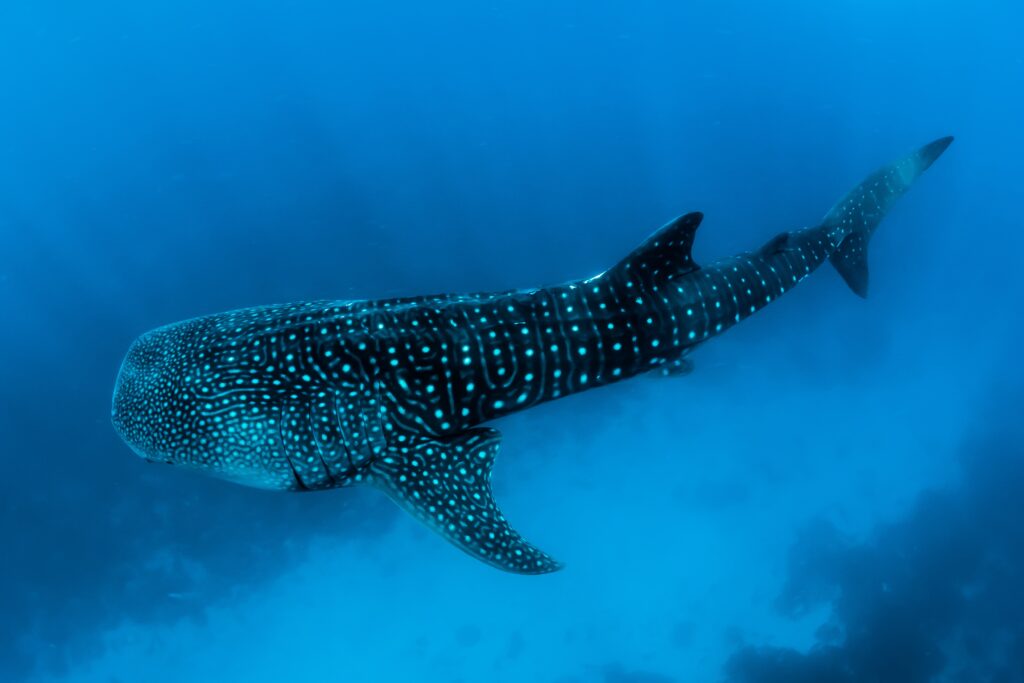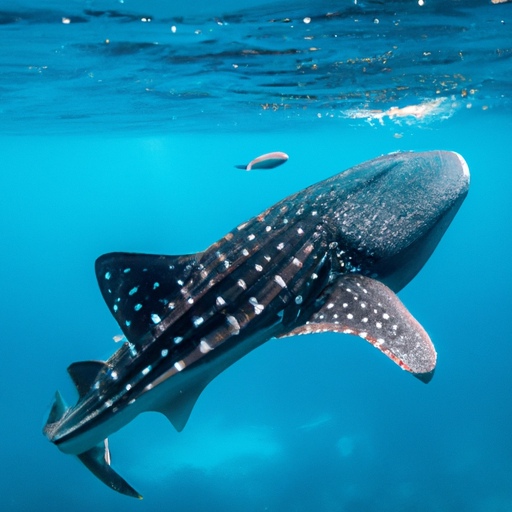Imagine you’re an avid scuba diver, eagerly seeking out thrilling underwater adventures. The thought of encountering sharks excites you, but at the same time, you can’t help but wonder, “What is the safest shark to dive with?” This burning question lingers in your mind as you yearn for an exhilarating yet safe interaction with these majestic creatures. In this article, we will explore the answer to this query, providing you with valuable insights and information to ensure your shark diving experience is both thrilling and secure.

Introduction
Shark diving, as the name suggests, refers to the activity of diving and swimming alongside sharks in their natural habitats. It has gained immense popularity in recent years as more and more adventure enthusiasts seek thrilling and unique experiences underwater. Contrary to common belief, shark diving is not as dangerous as it may seem, especially when precautions are taken and the right shark species are chosen for diving. In this article, we will explore the different types of sharks, debunk some misconceptions about them, discuss the factors affecting safety in shark diving, and highlight some of the safest shark species to dive with.
Understanding Sharks
Before we delve into the details of safe shark diving, it is crucial to understand the different types of sharks and challenge the common misconceptions that surround them. Sharks come in various shapes, sizes, and behaviors, and not all of them pose a significant threat to humans. It is important to respect these incredible creatures and approach them with the right mindset.
Types of Sharks
There are over 500 known species of sharks, each with its unique characteristics and behaviors. From the mighty Great White Shark to the docile Whale Shark, the shark family encompasses a wide range of diversity. Some popular shark species include the Nurse Shark, Whale Shark, Leopard Shark, Basking Shark, and Angel Shark.
Common Misconceptions about Sharks
Sharks have long been portrayed as bloodthirsty, man-eating predators in popular culture. However, this image is far from the truth. Contrary to popular belief, sharks do not actively seek out humans as food and most shark attacks are cases of mistaken identity. Sharks are curious creatures, and even the so-called “aggressive” species usually do not pose a significant threat to divers who respect their space and follow proper safety guidelines.
Factors Affecting Safety
Several factors influence the safety of shark diving experiences. Understanding these factors and taking the necessary precautions can significantly minimize the risks associated with diving alongside these majestic animals.
Shark Behavior
Sharks have complex behaviors and social hierarchies. Understanding their behavior patterns is vital in ensuring a safe and enjoyable diving experience. Sharks may display signs of aggression when they feel threatened or when their territories are invaded. By observing their body language and respecting their personal space, divers can minimize the chances of any negative interactions.
Diving Conditions
Diving conditions, such as water visibility, temperature, and current strength, play a crucial role in the safety of any dive, including shark diving. Poor visibility or strong currents can hinder communication and navigation, increasing the chances of accidental contact with sharks. Choosing dive locations with optimal diving conditions is essential for a safe and enjoyable underwater adventure.
Diver’s Experience and Skills
The experience and skills of the diver participating in shark dives can make a significant difference in the overall safety of the activity. Divers should possess good buoyancy control, have proper training and certifications, and be well-versed in shark behavior and safety protocols. Additionally, divers should know how to interact responsibly with sharks and be able to anticipate and react appropriately to any unexpected situations that may arise.
Safest Sharks for Diving
While no encounter with a wild animal can be entirely risk-free, several shark species are known for their non-aggressive nature and relative safety when it comes to diving. Let’s explore some of the top choices for safe shark diving experiences.
Nurse Sharks
Nurse Sharks are often regarded as one of the safest shark species to dive with. These sharks are bottom-dwellers and have a docile nature. They are generally non-aggressive, slow-moving, and spend their time resting or searching for food on the ocean floor. Nurse Sharks have small teeth and jaws, which further reduces the risk of injury during an encounter. Though they can grow up to 14 feet in length, their preference for shallow and warm coastal waters makes them accessible for divers in various locations around the world.
Whale Sharks
Whale Sharks, despite their massive size, are incredibly gentle and pose very little threat to humans. In fact, they are filter feeders, meaning they consume plankton and small marine organisms by passively filtering the water through their gills. Their impressive size, which can reach up to 40 feet in length, makes them an awe-inspiring sight for divers. Whale Sharks are often found near the surface of the water, making them easily accessible for divers of all skill levels. Famous dive sites like the Maldives, Mexico’s Isla Holbox, and the Philippines’ Donsol offer incredible opportunities to encounter these magnificent creatures.
Leopard Sharks
Leopard Sharks are known for their distinctive markings, featuring dark, bold spots over their slender bodies. These sharks are generally harmless and exhibit a calm and non-aggressive demeanor. They prefer shallow, sandy habitats and are commonly found near the coastlines of the United States and Japan. Diving with Leopard Sharks provides a unique opportunity to observe their graceful movements and interact with them in a peaceful environment.
Basking Sharks
Basking Sharks, the second-largest shark species after Whale Sharks, are known for their slow swimming speed and non-threatening behavior. These gentle giants are filter feeders, feeding primarily on tiny plankton. Basking Sharks can often be spotted near the surface, peacefully gliding through the water with their immense mouths open to filter out food. Scotland’s Isle of Mull and the Isle of Man are popular dive destinations where divers can witness the magnificence of these giant creatures firsthand.
Angel Sharks
Angel Sharks, named for their flat bodies and wing-like pectoral fins, are typically bottom-dwelling sharks. These sharks bury themselves in the sand, creating natural camouflage and surprising unsuspecting prey. While they are generally non-aggressive, divers should exercise caution when approaching them, especially during their resting periods. The Canary Islands are a well-known location for diving with Angel Sharks, offering a unique opportunity to witness their fascinating hunting techniques.

Characteristics of Safe Sharks
To identify safe sharks for diving, it is essential to remember some key characteristics that define their behavior and anatomy.
Non-Aggressive Behavior
Safe sharks for diving generally exhibit non-aggressive behaviors, including slow movements, a lack of interest in humans as prey, and minimal territorial aggression. These behaviors indicate that the sharks are less likely to perceive divers as threats and therefore pose a lower risk during underwater encounters.
Slower Swimming Speed
Sharks with slower swimming speeds are usually considered safer for diving due to their reduced ability for sudden and unpredictable movements. Slower-moving sharks are less likely to accidentally injure divers or react aggressively to their presence. However, it is crucial for divers to maintain a respectful distance to avoid disturbing the sharks or eliciting any defensive responses.
Smaller Teeth and Jaws
Sharks with smaller teeth and jaws pose a significantly lower risk to divers. These features reduce the likelihood of severe injuries in case of accidental contact or irresponsible behavior during underwater encounters. Smaller teeth are often indicative of a shark’s diet and feeding habits, which can further assure divers of their non-aggressive nature.
Diet Preferences
Sharks with a diet primarily consisting of plankton, small fish, or other non-human prey are generally considered safer for diving. These sharks are less likely to view humans as potential food sources and are more focused on their specific natural food preferences. Observing a shark’s diet can provide valuable insight into its behavior and level of risk during encounters.
Nurse Sharks
Nurse Sharks, belonging to the family Ginglymostomatidae, are often the go-to choice for divers seeking a safe and exciting shark diving experience. Let’s explore more about these fascinating creatures.
Physical Appearance
Nurse Sharks are typically medium to large in size, with adults averaging around 7-9 feet in length. They possess a stout body, broad head, and a pair of barbels on their snouts, which help them locate food hidden in the ocean floor. Their skin is covered in a rough texture with small, dermal denticles that protect them from parasites and other underwater threats. Nurse Sharks range in color from yellowish-brown to grayish-brown, enabling them to blend in with their surroundings.
Habitat and Behavior
Nurse Sharks can be found in tropical and subtropical waters, primarily inhabiting the western Atlantic Ocean, the Caribbean Sea, and the Gulf of Mexico. They prefer shallow coastal areas, such as coral reefs, mangroves, and sandy bottom regions. Nurse Sharks are nocturnal creatures, spending their days resting on the ocean floor and becoming more active at night to hunt for prey. Despite their sedentary nature, they can occasionally be witnessed engaging in short bursts of swimming.
Interaction with Divers
Nurse Sharks are generally tolerant of human presence and can oftentimes be approached closely by divers without eliciting an aggressive response. Divers can have the opportunity to observe nurse sharks in their natural habitat, appreciating their docile nature and intriguing behavior. However, it is important to remember to maintain a respectful distance and avoid any attempts to touch or harass them, as this may disturb and stress the sharks. Responsible interaction is key to ensuring the safety and well-being of both divers and nurse sharks.

Whale Sharks
Whale Sharks, scientifically known as Rhincodon typus, are the largest fish species in the ocean and a popular choice for divers seeking safe and mesmerizing encounters. Their peaceful nature makes them a prime candidate for once-in-a-lifetime diving experiences.
Largest Fish in the Ocean
Whale Sharks are true giants, capable of reaching lengths of up to 40 feet and weighing up to 20 tons. Despite their size, they are harmless filter feeders, living exclusively on a diet of plankton, small fish, and microscopic organisms. Their distinctive appearance, with a wide mouth and unique pattern of light spots and stripes on their dark skin, sets them apart from other shark species.
Gentle and Docile Nature
Whale Sharks have a reputation for calm and gentle behavior, rarely displaying any signs of aggression towards humans. They are incredibly slow swimmers, usually moving at a leisurely pace of around three miles per hour. This reduced swimming speed makes it easier for divers to keep up with them and observe their immense grace up close. Their tranquil and docile nature contributes to a safe and awe-inspiring diving experience.
Feeding Habits
As mentioned earlier, Whale Sharks are filter feeders, which means they feed by straining tiny organisms, such as plankton and krill, through their specialized gill rakers. They swim slowly near the water’s surface with their mouths wide open, allowing water to flow in and filtering out their microscopic food sources. This feeding behavior poses no threat to divers, as they are not interested in consuming anything larger than the small organisms they consume naturally.
Best Dive Locations
Whale Sharks can be found in various locations around the world, each offering unique opportunities to witness these gentle giants. Destinations like the Maldives, Isla Holbox in Mexico, and Donsol in the Philippines are renowned for their seasonal congregations of Whale Sharks. Local operators provide responsible guided snorkeling and diving experiences, ensuring both the safety of divers and the well-being of the sharks. These locations offer an incredible chance to swim alongside these magnificent beings and marvel at their majestic presence.
Leopard Sharks
Leopard Sharks, scientifically known as Triakis semifasciata, are another safe and approachable species for divers looking to encounter sharks in a peaceful underwater setting. Let’s dive into the details of these beautiful creatures.
Distinctive Markings
Leopard Sharks are easily recognizable by their unique and striking appearance. They have a slender body with bold and dark brown spots or saddles covering their back, head, and fins. These elaborate markings resemble a leopard’s pattern, hence their name. Leopard Sharks also have a long, flattened snout and a wide mouth positioned forward on their face.
Preferred Habitats
Leopard Sharks are typically found in the coastal waters of the eastern North Pacific Ocean, from Oregon to Baja California. They have a preference for sandy or muddy bottoms, as well as shallow estuaries, kelp forests, and rocky reefs. These coastal habitats provide them with abundant food sources and suitable conditions for their reproductive cycles.
Interactions with Divers
Leopard Sharks are known for their calm and non-aggressive behavior, making them an excellent choice for divers of all experience levels. They are generally unbothered by the presence of divers and can be approached closely, allowing for intimate encounters and detailed observations. However, it is important to remember that although they are tolerant, they are still wild animals and should be treated with respect. Divers should avoid disturbing or harassing them and maintain a proper distance to ensure a safe and mutually beneficial interaction.

Basking Sharks
Basking Sharks, or Cetorhinus maximus, are the second-largest shark species and provide a unique opportunity for divers to witness their gentle and awe-inspiring presence in the ocean. Let’s explore more about these magnificent creatures.
Second-Largest Shark Species
Basking Sharks are second only to Whale Sharks in terms of size, growing up to an impressive 26 feet in length. Despite their immense size and numerous rows of tiny, pointed teeth, Basking Sharks feed exclusively on microscopic plankton and pose no threat to humans. Their colossal frame is perfectly suited for their filter-feeding lifestyle.
Non-Aggressive Behavior
Despite their fearsome appearance, Basking Sharks are exceptionally placid and non-threatening. They typically swim slowly near the surface, with their large mouths agape, filtering out water and plankton through their gill rakers. Their docile nature and predictable behavior make encounters with these magnificent creatures a truly mesmerizing experience.
Feeding Habits
Basking Sharks are one of the three known filter-feeding shark species. Their massive mouths, wide gill slits, and gill rakers allow them to filter vast amounts of water, extracting microscopic plankton and small organisms as their primary source of nutrition. Their filter-feeding mechanism gives them a unique and captivating appearance as they gracefully glide through the water, mouths open to catch their microscopic prey.
Diving Opportunities
Basking Sharks can be found in temperate waters around the world, including the coasts of North America, Europe, and southern Africa. Some notable locations where divers can encounter these majestic sharks include Scotland’s Isle of Mull, the Isle of Man, and the Great Barrier Reef in Australia. These areas offer guided diving experiences to responsibly observe and appreciate the beauty of Basking Sharks in their natural habitat.
Conclusion
When it comes to safely diving with sharks, understanding their behavior and choosing the right species is key. Nurse Sharks, Whale Sharks, Leopard Sharks, Basking Sharks, and Angel Sharks are among some of the safest choices for shark diving experiences. Their non-aggressive behavior, slower swimming speeds, smaller teeth and jaws, and diet preferences make them ideal companions for underwater adventures. It is crucial to prioritize responsible diving practices, respecting the natural environment and the wildlife that inhabits it. By ensuring a safe and respectful interaction with sharks, we can enjoy the beauty and wonder of these remarkable creatures while contributing to their conservation efforts. So, embrace the thrill, dive responsibly, and create unforgettable memories with the safest sharks to dive with

- Can You Dive With Sharks In California? - August 19, 2023
- What Are The Rules Of Shark Cage Diving? - August 19, 2023
- Where In Florida Can You Dive With Sharks? - August 19, 2023








